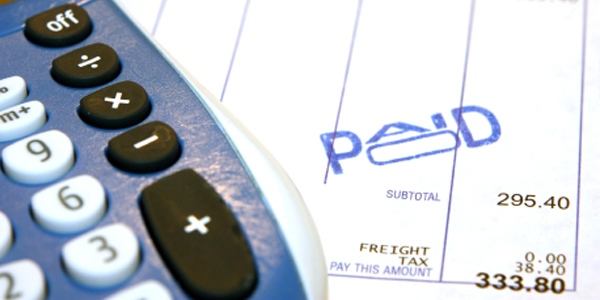You are invited to participate in our annual AP Market Research, click here to take the survey. All participants get a free copy of the resulting report.
In my earlier post, The Rise of the B2B Network and B2B Payments, I talked about the increasing need for eInvoicing providers to create value for suppliers as well as buyers and today I’m going to explore that perspective a little further.
When I think about eInvoicing, most of the information, research and content out there is focused on buying organizations and the benefits to the buyer. This is, of course, because most of the solutions in the market have historically taken a very buyer-centric approach, although this is beginning to change. Traditional supplier enrollment efforts have focused mainly on strategic suppliers (i.e. a small percentage of all suppliers). The supplier’s size (and the volume of business between the buyer and supplier) often dictates the appetite for participating in eInvoicing.
This buyer-centric solutions and approaches to supplier enablement may ultimately be the reason that such a a high percentage of suppliers including most small to mid-sized suppliers decide to ‘pass’ on the idea of eInvoicing. But, are suppliers making the right decision or do they just lack enough information to understand the value that eInvoicing creates for suppliers? Are solution providers creating enough value for suppliers and are they and their buy-side customers clearly communicating what they have created? Are the business networks making it worthwhile for suppliers to join? In many cases, the answer to these questions is no. Even where the answers are yes, the industry could be doing much more. As I’ve said previously, those that fail to provide real value for suppliers will 1) not be able to connect buyers to a majority of their supply chain (unless mandates are issued by the buying organization or the government) 2) not be able to significantly grow the number of participants in their network. eInvoicing providers and business networks alike can certainly do a better job explaining the supplier value proposition for participation, but they should also work to better understand the challenges that suppliers face and keep them in mind as they develop and enhance their solutions:
Challenge for suppliers
- Different standards and formats – It’s not uncommon for a supplier to utilize multiple portals to connect to their customers, this is a challenge and it’s expensive as quite often the formats and standards are different, especially if operating globally. This adds a layer of complexity and cost to the supplier’s process as it often requires the involvement of IT.
- Cost – Many eInvoicing providers charge suppliers to submit eInvoices and this may be a deterrent depending on the size of the customer relationship and the capabilities made available to the supplier. Due to the differing supplier pricing models, suppliers that transact with customers through multiple platforms have the added burden of managing different pricing structures. That said, there are now more providers than ever before that offer free eInvoicing (and often more)to suppliers. Now, that alone doesn’t guarantee higher supplier participation, there still must be some value-add for suppliers more than being able to submit an eInvoice.
- Integration challenges – We often talk about integration between eInvoicing and the buying organizations back-end system, but what about integration to supplier systems. This may include accounts receivable systems, order-to-cash or billing systems. Is this something existing eInvoice solutions are doing? Better yet, what about offering these capabilities to suppliers? Offering such capabilities (e.g., billing, invoicing, receivables management, reporting, etc) would certainly attract smaller suppliers that don’t have access to such tools.
Benefits to Suppliers
When true supplier value is delivered, there are a number of benefits.
- Reduced costs – Being able to electronically submit invoices to your customers can deliver significant savings (assuming there are no or low transaction fees for suppliers). For example, a reduction in printing and mailing costs, savings from not having to reprint invoices, fewer customer service calls, etc.
- Fewer disputed invoices – Suppliers can flip PO’s into invoices or submit eInvoices straight-through from their AR system. eInvoicing eliminates the buyer’s need to manually create an invoice, reducing the potential for errors. As a result, invoices are less likely to be rejected and customers can start processing them without delay. In the event a dispute does occur, it can easily and quickly be resolved online as opposed to via the phone.
- On-time payments: eInvoicing can significant impact invoice processing and approval cycles on the buyer side and when combined with ePayments, suppliers may see an improvement in on-time payments.
- Improved ability to forecast: Having access to real-time data around submitted invoices, invoice status, payments and more adds a level of predictability and visibility to the suppliers AR process and as a result they are better able to forecast cash flow. Of course this depends on how many customers are being invoiced via the same platform.
- Accelerated Payment: If suppliers are able to receive payments quicker via a simple and effective tool that doesn’t require heavy investment of time and resource, significant value is created. Submitting eInvoices will certainly impact the buyer’s processing time, they are more likely to approve an invoice in time to accept / offer an early payment discount. Additionally, if a supply chain finance program is in play from either the buyer’s side or the supplier’s side, an approved invoice is key and the quicker its approved the better.
RELATED ARTICLES
The Changing View of Suppliers
Best-in-Class Supplier Management, Part I
Best-in-Class Supplier Management, Part II

